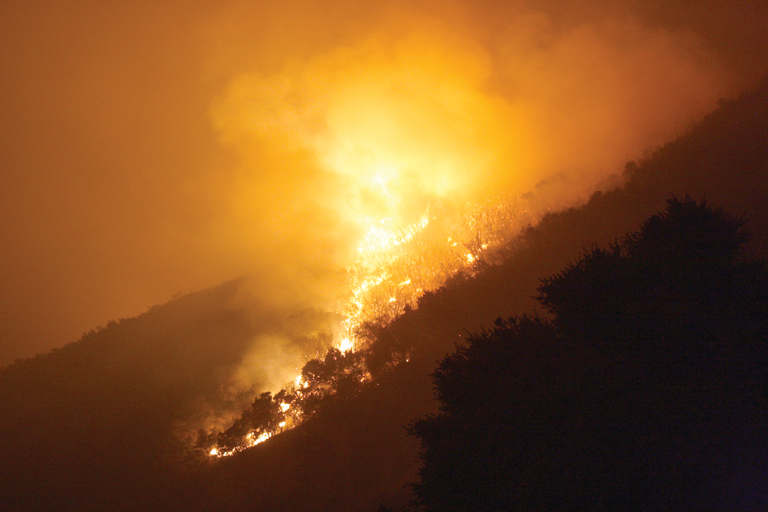
Residents, especially those living in high-risk areas, need to keep areas near their homes clear of brush and other vegetation in order to avoid the spread of fires.
By Charly SHELTON
This is the third article in a three-part series on fire and fuel management in the local area.
Over the last two weeks, we’ve learned about the restorative necessity of wildland fires, the management techniques of native Californians for thousands of years before the arrival of Europeans, and how wildland fire fuel is managed by the U.S. Forest Service in the modern day. But this week, our focus turns to the local fire station, and to the individual, to see what each can do to keep homes fire safe in the face of a wildfire.
“Like anybody else, including me or any other citizen, [Fire Station 82 personnel do] brush inspections for ourselves,” said Captain Eddie Turner of LA County Fire Station 82. “We have a protocol we follow and it’s a guideline that’s both good for the neighbor and good for the fire department. They’re protocols that we require everybody to [follow]; they get the basics so their home is fire safe. We have a protocol for that.”
Turner added that communication with homeowners in high-risk areas is essential.
“People who are in the brush area do get notifications and then they get a mailer with all the information on what they need to do, kind of like yardwork, at each of these locations. They follow that,” Turner said.
These instructions include keeping weeds down and removing and clearing away all flammable vegetation or combustible growth for a distance of not less than 30 feet from structures.
But protecting structures is only one part of fighting a fire. More important than protecting homes, Turner said, is protecting residents. If a home is overrun in a blaze, firefighters will get all the people and pets out first before they start to fight the flames.
“Our first priority is life – if we can’t take care of a life, then there’s no secondary. Once we have life taken care of, then we can take care of the property. After the property is taken care of, we simultaneously take care of the environment,” Turner said. “So those are the three elements we follow.”
Sometimes in a fire, first responders are busy taking care of the neighborhood and clearing houses of people while structures succumb to the blaze. Those homes with a border of cleared space around them can wait longer before the structure catches and are therefore more likely to be saved.
“Some people might ask, ‘Well how come one home is saved and 10 were lost?’” said Turner. “It’s because life safety is a priority first. People can’t be replaced by an insurance company. [Once a home is cleared,] we fight fire aggressively with the tools we have. The temperature gets so hot and you can go into a burning inferno, but it’s like walking into a fire pit. Aluminum wheels on cars fall off and melt down to the ground; it’s just hard to fight Mother Nature. Once people follow the protocols on how to clear the pressure on their homes, they stand a chance.”
Residents sheltering in place to defend a home instead of evacuating as ordered can be more harmful to themselves, their home and their neighbors because that resident needs to be taken care of before the fire can be tackled. Staying to defend is not a wise idea, especially now because wildfire has changed and is more intense than ever before after the years-long drought.
“Should a fire be coming by, I personally would not make a recommendation for anybody to stay and defend their home because the fires are different than they were even 10 years ago,” Turner explained. “Fire is more ferocious, it’s hotter, it burns faster, it’s dryer and we always have to reevaluate our tactics because things are always changing. We have fire season year-round; now it’s official,”
He elaborated on the recent Woolsey Canyon Fire.
“It’s a tragedy. We had a fire start at 4:17 in the morning in Woolsey Canyon and it took us to the coastline by 8:30 a.m. I’ve never heard anything travel that fast, with that much fire, with that much ferocity. It’s amazing.”
To learn about the guidelines Turner mentioned and how to get a home safe in fires, earthquakes, floods and more, visit LACounty.gov/emergency/emergency-survival-guide.
